How to grow my business online (Just like Amazon), professionally

Franco Brutti
Let’s face it. If you’ve got an online retail business, it’s difficult to compete with the likes of Amazon.
Next-day shipping promises, award-winning customer service teams, the largest SKUs (stock-keeping unit) in the world...it’s just impossible.
I mean, Jeff Bezos is even building Utility-Scale Solar Projects to go with his AWS Data Centers, AI robots, and streaming service.
Honestly, it won’t be long before he’s put one of us on the moon…
Most of us would be happy if we could just take a piece of their online retail success with us - happily leaving Jeff and the team with Apollo 18.
Well, the good news is that you can (to a degree).
In this post, we are going to analyze 3 on-page strategies currently used by the pros - Amazon, Booking.com, and Groupon - and uncover why they’re so successful.
Tips to grow your business online (like the pros)
So, why is it that almost every time a user lands on their web page they end up buying something?
Just why is that? What are they doing differently? Can I replicate that with my business?
The three primary techniques they incorporate into their online growth strategies are:
Social proof
Scarcity
Eliminating objections.
And yes, it’s perfectly possible to replicate this success with your online business.
Social Proof
People generally don’t like to be the first to try (or buy) something. They prefer to leave that to you and me - to see what our reactions are first. If they’re convinced, they’ll jump in and join us.
When a product/service is backed by others it gives people the confidence to continue with their purchase decision. If someone else in a similar boat to them was satisfied, why not them?
Booking.com
Take a look at how Booking.com use social proof in their search results:

As you can see, 2897 customers scored this hotel 9.1/10 (Superb). This shows potential clientele that people that come to this hotel are extremely happy with their stay.
This ensures that a customer's first impression of the hotel is positive. They’re automatically assuming that if they choose to stay there, their experience will mirror that of previous customers.
But that’s not all.
When customers click on the “Choose a room” button the 2897 reviews appear immediately, allowing readers to go into greater detail about the previous clientele’s stay if they so wish.

It’s also possible to filter through reviews. This way you can check negative comments (if there are any) to see what complaints customers had. Again, this furthers the trust you have in Booking.com.
Another way that Booking.com furthers their social proof is that when a room is selected, the following message appears: reserved 45 times in the last 24 hours.
This immediately shows customers that there is a lot of interest in this particular hotel. Not only does this imply a sense of urgency in booking, but if other people are interested it’s likely a great place to stay.
Let’s take a look at how Amazon uses social proof in their search results.
Amazon
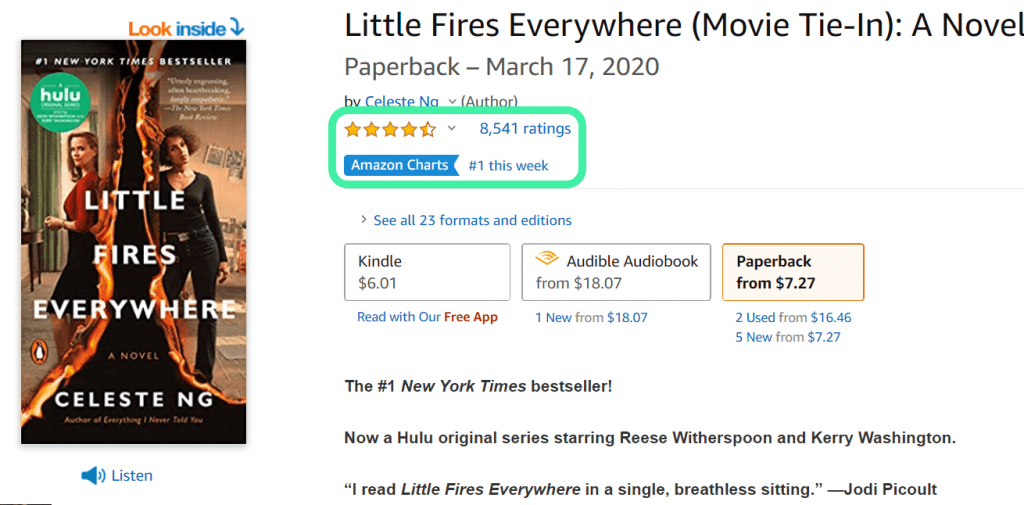
Straight away we can see that this book currently ranks #1 in the Amazon Charts. It didn’t get there by being a boring read now, did it!
We can also see it received a 4.5/5 star rating based on the 8541 people to review it so far.
This reinforces your confidence in the book as not only are the reviews neutral, but they are overwhelmingly positive. Again, if these readers enjoyed the book, then why wouldn’t you?
Another social proof strategy that Amazon uses is to show related products to what you’re viewing, based on what that previous customers also viewed.
This is more of a “cross-sell” strategy but also reinforces your confidence in the brand’s ability to deliver you relevant products.
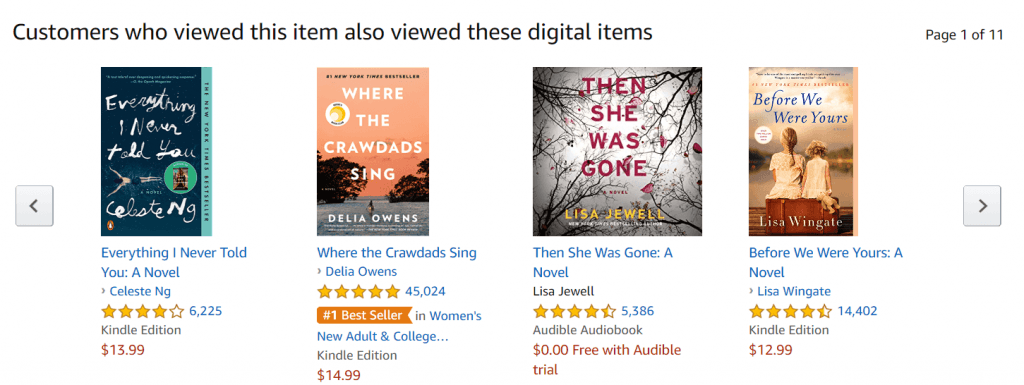
Let’s take a look at how Groupon uses social proof in their search results.
Groupon

Straight away we can customer reviews below each experience, with an additional indicator of those that are currently trending.
If an experience is highlighted as “trending” it means that a lot of people have been viewing or buying it recently.
This raises our curiosity, leading us to wonder why?
Also, once you click on one of their experiences you’re immediately shown that the reviews are 100% verified. This authenticity further increases your trust in the brand.
Another strategy they use to increase customer’s trust in the brand is to highlight “top reviewers”.
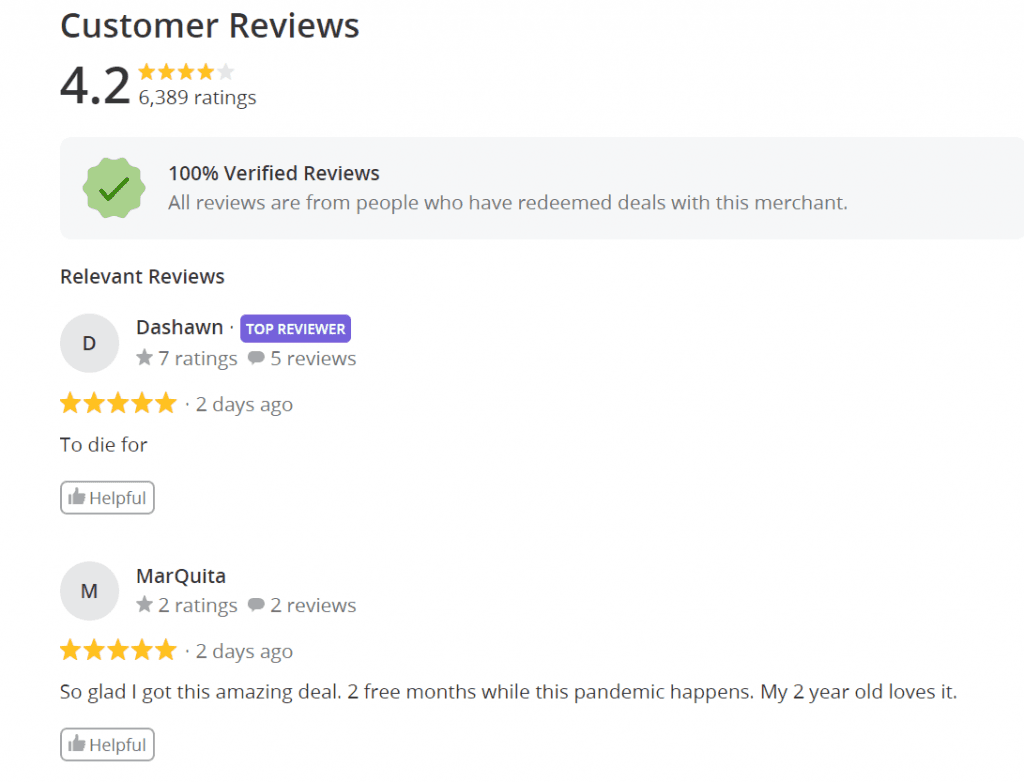
This shows potential customers that previous users were so happy with their Groupon experience that they returned not only to purchase more but also took time to leave a review.
Scarcity
If you think about it, the harder it is to get a hold of something the more attractive it becomes.
There’s a certain exclusivity in owning that item.
So when a customer sees an item is “limited edition” or “while stocks last” they are driven by a sense of urgency to purchase that product or service.
This is where the term FOMO (fear of missing out) comes from, as nobody wants to be that one person to go without!
Let’s go back to Booking.com and see how they use scarcity as part of their marketing strategy.
Booking.com

Customers see that there are only 5 rooms like this left on the entire site for the selected dates. If they don’t reserve the room ASAP they run the risk of losing out altogether.
Not only that but once you click through to book the hotel you are shown that if you don’t reserve the room right now, prices may well increase in the future.
As a customer, you don’t want to risk paying more for something you’re pretty much decided on already. This sense of urgency pushes you towards a purchase decision.
Once you’ve clicked through you are shown various rooms at the selected hotel.
Booking.com adds another layer of scarcity by confirming that each type of room has a limited number of vacancies left.

Also notice that as you scroll down the page there’s a dynamic customer review tab on the left, again reinforcing social proof as you make your selection.
Let’s go back to Amazon now and see how they use scarcity as part of their marketing strategy.
Amazon

Amazon highlights products that are low in stock in red to create a sense of urgency in buyers.
Once you click on the product you are now reminded that there’s only 1 left in stock. It’s clear that if we want this item then we should purchase it ASAP.
Also, because it is a limited edition item it’s implied that demand is high. This creates further urgency in the buyer’s mind.
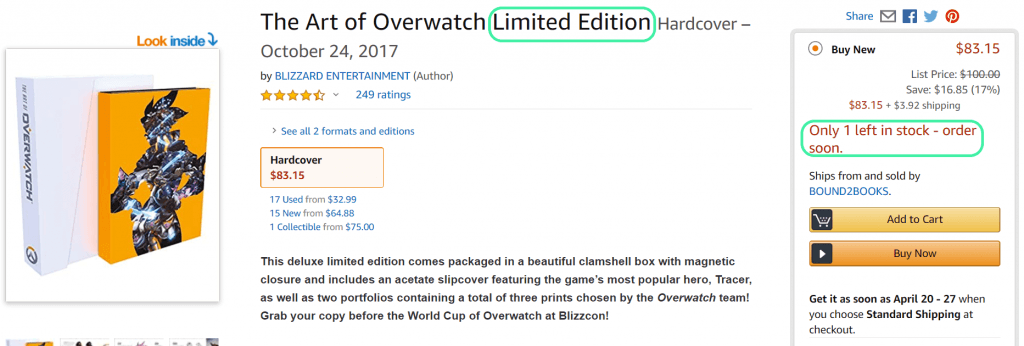
Finally, let’s take a look at how Groupon uses scarcity as part of their marketing strategy.
Groupon

We can immediately pick out 2 separate examples. The selling fast comment below our first product reminds us that it is both popular and likely to run out soon. The second is the 13 hours left price timer.

If we click on the “selling fast” product we immediately see an active countdown timer in the top right-hand corner of the screen. The longer you spend on the page the quicker the countdown expires.
Also, next to the countdown timer we are again reminded that the product is selling fast. If we want it for the current price then we need to buy it now or risk missing out.
Customer Objections
Objections are mental barriers that rise during a potential customer’s purchase decision.
This is something that occurs during almost every transaction meaning brands need to get in front of objections ASAP.
To do this, brands need to get inside the minds of potential customers to identify exactly what concerns they have and how they’d like them to be addressed.
Let’s look at how Booking.com tackles customer objections in their search results.
Booking.com

We can see they’ve identified 2 common customer concerns:
Cancellation fees
Prepayments
Before we’ve even looked at the hotel, Booking.com addresses some potential concerns.
This saves us from having to look for that information elsewhere and reduces the time to make a purchase decision.
Another concern Booking.com uncovered is the additional cost of breakfast on top of a standard reservation fee.
This is something that’s potentially caused customers to abandon their hotel search in favor of a competitor. So, Booking.com got in front of the problem and addressed it straight away.
Customers can now clearly see breakfast is included with zero additional surcharges at this hotel.

Let’s see how Amazon gets in front of their customers’ objections.
Amazon
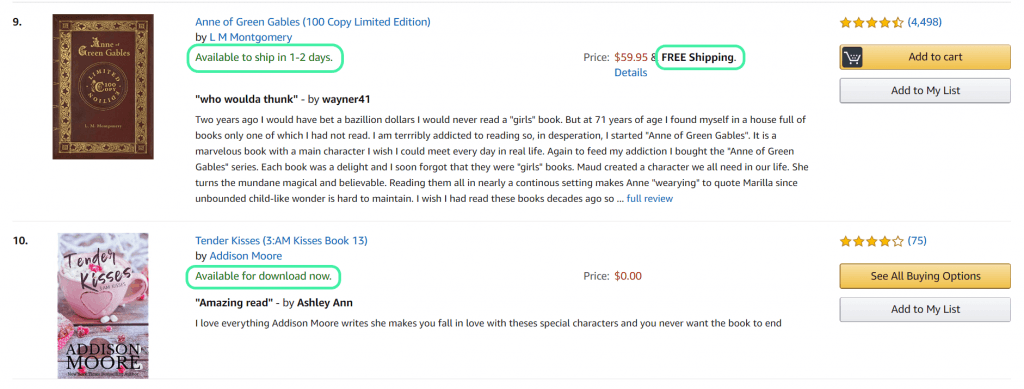
It appears that Amazon identified 3 potential customer issues and chose to confront them on the search results page:
Sipping time
Shipping cost
Downloadable
Amazon knows that a lengthy shipping process is going to put buyers off. With the speed of eCommerce these days customers are used to receiving goods within a couple of days ordering.
The same goes for shipping costs.
To be more attractive to customers many companies are soaking up postage costs. The same can be said for the option to download books.
By addressing these concerns early on in the buying process, Amazon reduces the likelihood of customers leaving their sight for a competitor that offers these guarantees.
Groupon

Groupon tackles customer objections slightly differently to Booking.com and Amazon. They add a section on the conditions of each selected experience, titled: The Fine Print
Because each of Groupon’s experiences is unique from one another, the only way for Groupon to get ahead of customer objections is to highlight exactly what it does and does not include.
This is an extremely effective technique as each experience page is tailored to answer specific customer objections.
To round it up
So, there you have it. Three different strategies to grow your online business verified, and used by the biggest retailers out there.
Are these tactics you were already familiar with? If so, have you been able to implement them with success?
Let us know in the comments below.
Looking for something specific?
18 nov 2020
